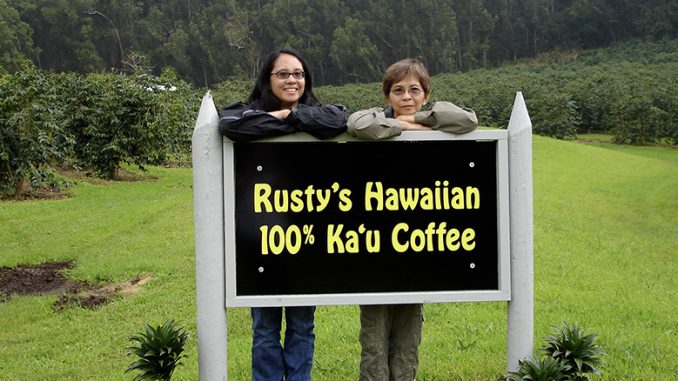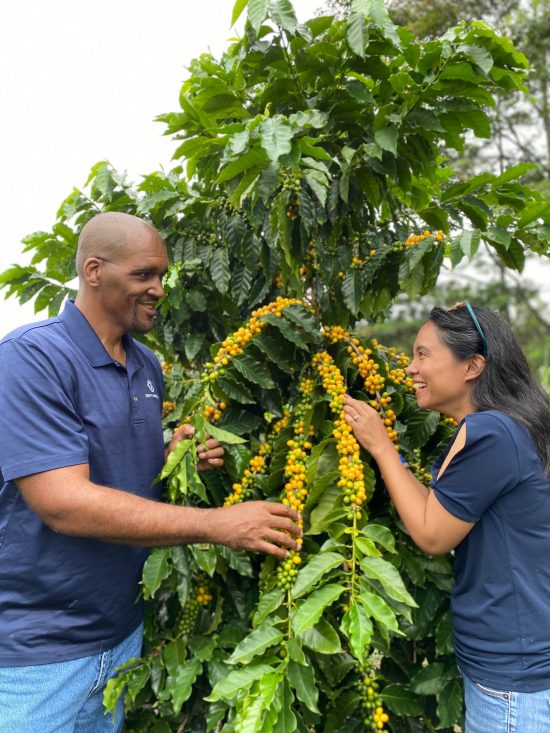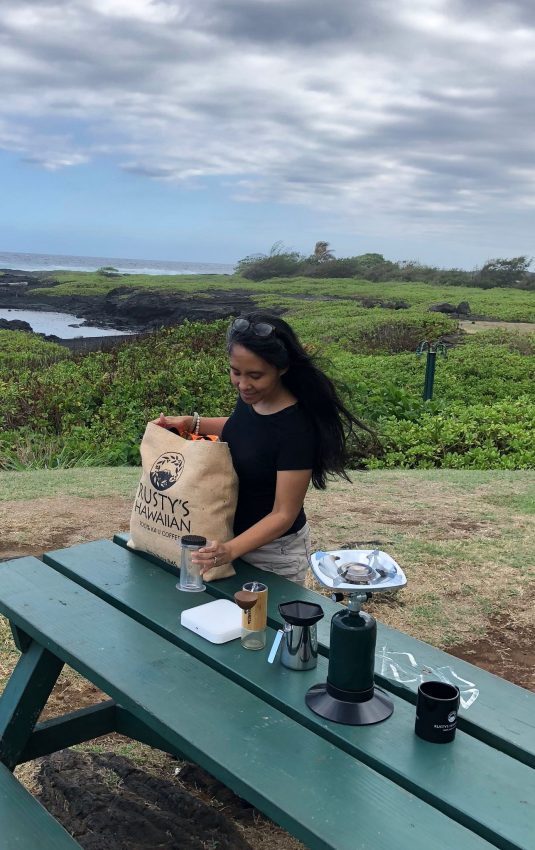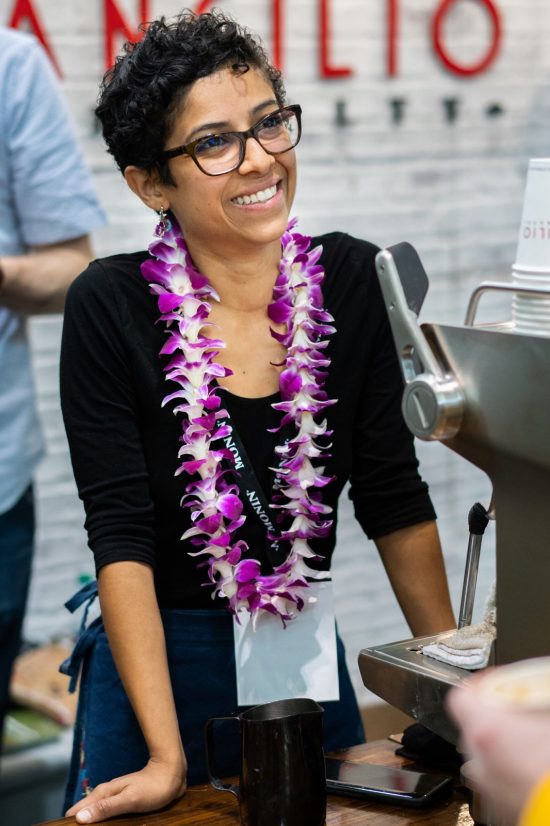
We feature our extended interview with Joan and Ralph of Rusty’s Hawaiian Coffee, plus address the recent discovery of coffee leaf rust in the area.
BY MADELINE LONGORIA GARCIA
SPECIAL TO BARISTA MAGAZINE ONLINE
Photos courtesy of Rusty’s Hawaiian Coffee
In the December 2020 + January 2021 issue of Barista Magazine, we spoke with Joan Obra and Ralph Gaston, co-owners of Rusty’s Hawaiian Coffee, for our “One on One” feature. We spoke about their journalism careers, their unexpected plunge into the coffee world, Joan’s family history in the United States and the Philippines, and how their experiences shape the way they do business. Our conversation was much longer and more detailed than we had space to print, so we want to share more with you here. Due to the recent discovery of coffee leaf rust (also known as roya) in Hawai’i, we felt it was appropriate to delve into that topic and what it means for the future of Rusty’s Hawaiian Coffee, and the Hawai’i coffee industry as a whole.

Madeleine Longoria Garcia: Rusty’s is a family business and I assume the plan is to keep it that way. I know Mama Lorie loves working the farm, but does she have any plans to retire?
Ralph Gaston: I can’t imagine Nanay Lorie retiring. She is in constant motion, even at 68. … If she stopped moving I would worry a bit!
Joan Obra: (Laughs) If there’s one thing I’ve learned, both from writing about food in Fresno and growing coffee in Hawai’i, it’s that farmers don’t really retire. My mom gets aches and pains when she’s sitting around. She prefers the bustle of harvest season. And manual labor is a point of pride for her. A lot of folks her age who worked in desk jobs can’t do what she does today.
MLG: I guess what I’m getting at is—do you all plan for this to be your life’s work, too? In 30 years, 50 years—is there a plan for Rusty’s to remain an Obra family business? We see family legacy coffee farming on a slow decline as younger generations lose interest in farming, or simply want a different life for themselves.
JO: Political and economic upheaval have taught us not to plan that far ahead. Remember, my father was adapting to the Marcos dictatorship when the approval of his U.S. green card completely changed his life. My parents wouldn’t have launched a coffee farm if Pahala’s sugar industry had thrived. And when Ralph and I were studying journalism in graduate school, we had no idea that the Great Recession would shock that industry after only a decade.
Looking ahead, we’re thinking of the climate crisis (and coffee leaf rust). What will it do to Hawaiian coffee, even over the next 20 years? We expect great change, but we don’t know to what extent.

Madeleine: Speaking of which, coffee leaf rust (CLR) was recently discovered in Hawai’i on Maui Island and Hawai’i Island back in late October. Can you touch on how this discovery has affected your family’s mindset around the business and coffee production in general?
JO: We knew it was just a matter of time before CLR arrived in Hawai’i. Still, that didn’t lessen the sting of running out of time. After swearing a bit, my reaction was, “Oh, of course the potential industry killer would show up in 2020—when we’re already dealing with a pandemic and perhaps the most consequential election of our lifetimes. And it’s only October! What else will this year bring?”
But that pessimism was short-lived. As our industry mobilized, I remembered my father’s lesson: Keep going and lean into community. It’s heartening to see the differences between our collective response to CLR versus coffee berry borer (CBB). With the infrastructure to combat CBB already in place, it has been easier to pull together around CLR. We’ve got various USDA agencies, the University of Hawaii, the Hawaii Agriculture Research Center, our Congressional representatives, international scientists and agronomists, our own industry organizations—the list goes on. The Hawaii Coffee Association (HCA) has done an excellent job as the clearinghouse for information. And Madeleine, as the liaison between the Specialty Coffee Association (SCA) and the HCA, you’ve been an important part of this effort. We’re grateful you’re in that role.
One last point: As one of the world’s last coffee-growing regions to come down with CLR, Hawai’i benefits from the extensive research around rust management and rust-resistant varieties. Our state will end up with mass plantings of new varieties that cup well, are more resilient, and may have other benefits, such as higher yields and nematode resistance. So we’ll turn this crisis into an innovative push. In the meantime, we’re crossing fingers and toes that all of us farmers can keep our fields as healthy as possible.

ABOUT THE AUTHOR
Madeleine Longoria Garcia is a coffee professional living in the middle of coffee country on Hawai’i Island. She is the co-owner of Pacific Coffee Research, where she works at all levels of the supply chain as an educator, Q Arabica Grader, and coffee technician. Madeleine is also a Community Coordinator for the SCA US Chapter, representing and working for the Hawai’i coffee community.

